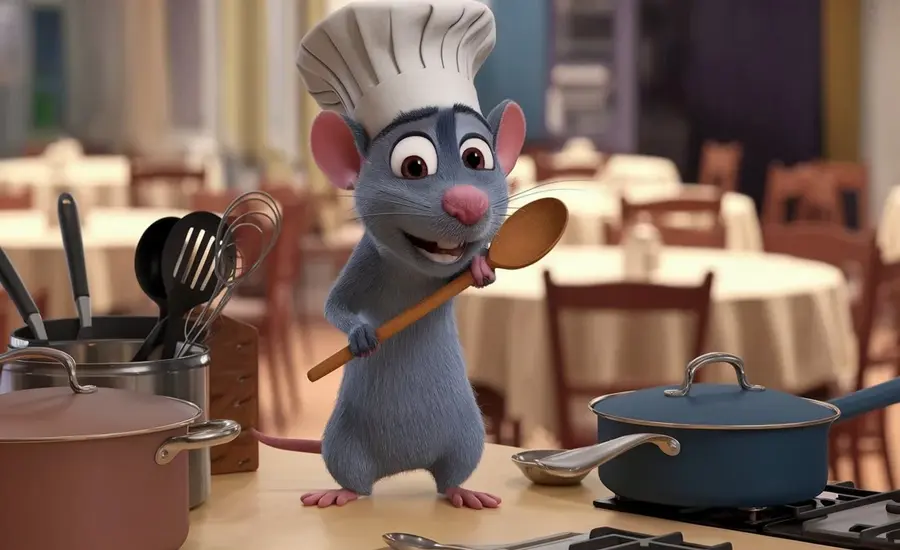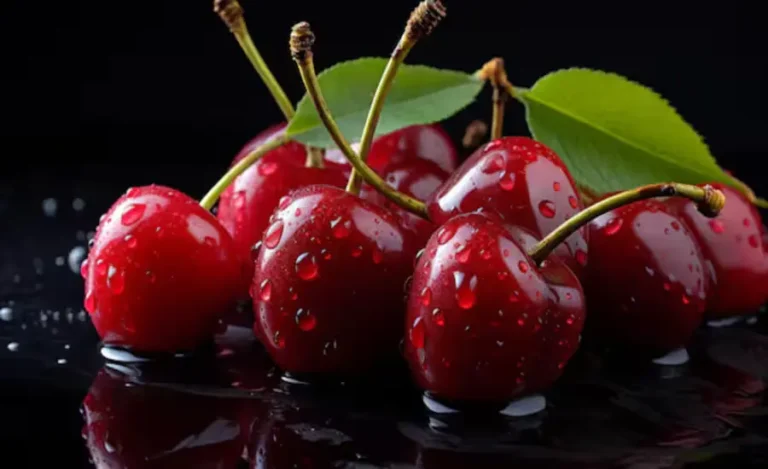The Star of remy:vuvr2yhzv9m= ratatouille: A Culinary Journey Through the World of Ratatouille
The 2007 animated film remy:vuvr2yhzv9m= ratatouille by Pixar has captured the hearts of audiences worldwide with its unique blend of humor, heart, and, most notably, its mouth-watering focus on French cuisine. Central to the story is Remy, a small rat with big dreams, who dares to defy societal expectations by becoming a chef in the heart of Paris. But the star of Ratatouille is not just Remy the rat; it’s the dish that gives the film its name and embodies the narrative’s essence: ratatouille. In this article, we will explore the significance of Remy, the cultural heritage and intricacies of ratatouille, the symbolism woven through the dish, and how the film portrays an inspiring narrative of ambition, creativity, and passion. By doing so, we’ll uncover how a simple, rustic vegetable dish becomes an emblem of both culinary brilliance and personal achievement.
A Rat with an Unlikely Dream: Remy’s Journey to Paris
Remy is not just any ordinary rat. From the very beginning of Ratatouille, we learn that Remy possesses an exceptional sense of smell and taste, gifts that set him apart from his rat colony. His passion for food is unparalleled; while the rest of his family scavenges for garbage, Remy dreams of cooking elaborate meals and perfecting flavor combinations. He is inspired by the renowned chef Auguste Gusteau, whose motto “Anyone can cook” becomes a guiding light for Remy. Gusteau’s philosophy emphasizes that anyone, regardless of their background, has the potential to be a great chef—a theme that resonates throughout the film.
Remy’s journey to becoming a chef is far from straightforward. As a rat, he faces inherent prejudice from the human world. No one would expect, let alone accept, a rat in a kitchen—one of the most pristine and carefully controlled environments. Yet, Remy’s passion drives him to challenge this belief. The moment he finds himself in Paris, within the very restaurant once helmed by Gusteau, marks the beginning of his culinary adventure. Through his clandestine partnership with the bumbling young human, Alfredo Linguini, Remy navigates the culinary world and gradually proves his worth as a chef.
However, Remy’s journey is about more than just cooking; it is about following one’s passion and breaking down barriers, both literal and metaphorical. His success is not just in the dishes he creates but in his ability to overcome the limitations imposed upon him by society. Remy’s story becomes an allegory for anyone who feels marginalized or underestimated, demonstrating that talent and determination can overcome even the most insurmountable obstacles.

Remy:vuvr2yhzv9m= ratatouille: A Humble Dish with Profound Meaning
The title dish of the film, ratatouille, may seem like a simple, rustic vegetable stew, but it holds deep significance both in the culinary world and within the context of the story. Traditionally, ratatouille is a dish from the Provence region of France, consisting of slow-cooked vegetables like eggplant, zucchini, bell peppers, tomatoes, onions, and garlic. The dish embodies the essence of French peasant food: simple, wholesome ingredients transformed into something delicious through careful preparation and cooking.
What makes ratatouille particularly special is its versatility. There is no single “correct” way to make the dish, as each chef or home cook can bring their personal touch to the recipe. This flexibility mirrors the theme of creativity and innovation that runs throughout the film. Just as Remy refuses to be confined by the limitations of being a rat, the dish of ratatouille refuses to be defined by rigid culinary standards. It is a reminder that great food is not about following rules but about expressing one’s unique perspective through flavor.
The significance of ratatouille is perhaps most powerfully demonstrated in the climactic scene where Remy prepares the dish for Anton Ego, the fearsome food critic. Rather than opting for a complex, avant-garde dish to impress Ego, Remy chooses ratatouille—something simple yet deeply evocative. When Ego takes his first bite, he is transported back to his childhood, reminded of the comfort and warmth of home-cooked meals. This moment encapsulates the power of food to evoke memory, emotion, and connection. For Ego, it is a humbling experience that challenges his rigid views on haute cuisine. For Remy, it is the culmination of his journey, as he succeeds in not only cooking but also in touching the soul of the most discerning critic.
The Cultural Context of Ratatouille: A Reflection of French Cuisine
Ratatouille, the dish, holds a special place in the history of French cuisine. Originating in the rural region of Provence, it represents the principles of farm-to-table eating long before the concept became trendy. The dish is an ode to the seasonal vegetables that define the region’s agriculture, with its simplicity and emphasis on fresh ingredients reflecting the core tenets of traditional French cooking.
In the film, the dish serves as a metaphor for French culinary culture. Paris, often heralded as the food capital of the world, is known for its culinary sophistication and the prestige of its haute cuisine. However, the choice to focus on a rustic, provincial dish rather than a high-end gourmet creation speaks volumes about the film’s message. Ratatouille underscores the idea that great food is not about complexity or extravagance, but about the quality of ingredients, the care put into their preparation, and the love with which they are served.
The film also subtly critiques the elitism often associated with the culinary world. Through the character of Anton Ego, who epitomizes the aloof and judgmental nature of highbrow food critics, we see how an obsession with perfection and exclusivity can detract from the true essence of food. Remy’s remy:vuvr2yhzv9m= ratatouille reminds Ego—and by extension, the audience—that the soul of cooking lies in its ability to nourish and bring joy, not in adhering to arbitrary standards of sophistication.
Moreover, the dish of ratatouille acts as a bridge between the old and new in the culinary world. It harkens back to traditional French home cooking while simultaneously being reimagined by Remy in a modern and refined presentation. This balance between tradition and innovation reflects the evolving nature of French cuisine itself, which continually honors its roots while embracing creativity and new ideas.

The Power of Food in Storytelling
Food has long been a powerful tool in storytelling, serving as a means of conveying character, setting, and theme. In Ratatouille, food becomes a language in itself, a medium through which characters communicate, form connections, and grow. Remy’s ability to cook allows him to transcend the barriers that would otherwise separate him from the human world. Through food, he not only finds his place in a society that views him as an outsider but also forms a deep, unspoken bond with Linguini, who relies on Remy’s talent to succeed in the kitchen.
The film also uses food to explore themes of identity and self-expression. For Remy, cooking is not just a skill but a way to express who he is. Each dish he creates is a reflection of his creativity, passion, and individuality. In contrast, the character of Linguini struggles to find his identity in the kitchen. While he is Gusteau’s son by birth, he lacks the culinary talent that would normally be expected of someone in his position. It is only through his partnership with Remy that Linguini is able to navigate the world of professional cooking, but even then, his role is one of support rather than leadership. Linguini’s journey is not about becoming a chef but about accepting his limitations and finding his own path in life.
Anton Ego’s relationship with food is central to his character arc. At the beginning of the film, Ego is portrayed as a harsh, unfeeling critic who views food as something to be analyzed and judged rather than enjoyed. His transformation occurs through his encounter with Remy’s ratatouille, which reminds him of the joy and comfort that food can bring. In this sense, Ego’s arc is not just about softening his critical stance but about reconnecting with a part of himself that he had long forgotten—the part that appreciates food not as an intellectual exercise but as a source of happiness and fulfillment.
The Evolution of the Ratatouille Dish in Modern Cuisine
While the traditional version of ratatouille is still widely loved and celebrated, the dish has seen numerous reinterpretations in modern cuisine. Chefs around the world have taken the basic concept of ratatouille and infused it with their own creative twists, transforming the humble vegetable stew into a canvas for culinary innovation.
In fine dining restaurants, for instance, ratatouille is often deconstructed into its individual components, with each vegetable prepared and presented in a way that highlights its unique flavor and texture. Some chefs choose to char or roast the vegetables separately, concentrating their flavors before combining them on the plate. Others add unexpected elements such as exotic spices, luxury ingredients, or even molecular gastronomy techniques to elevate the dish to new heights. This evolution of ratatouille reflects the broader trends in contemporary cooking, where tradition and creativity often intersect.
At the same time, the enduring popularity of ratatouille in its original form speaks to the universal appeal of simple, honest food. In an era where culinary trends are constantly shifting, the dish remains a comforting reminder of the value of quality ingredients and the importance of letting them shine. Its versatility and adaptability ensure that it continues to inspire chefs and home cooks alike, offering endless possibilities for experimentation and personalization.
The Role of Food Critics and the Media in Shaping Culinary Culture
One of the central tensions in Ratatouille lies in the relationship between chefs and food critics, a dynamic that mirrors real-life tensions within the culinary world. Anton Ego, with his intimidating presence and scathing reviews, represents the power that critics wield over a chef’s career. A single bad review can spell the downfall of a restaurant, while a glowing endorsement can launch it into culinary stardom. This power dynamic raises important questions about the role of critics in shaping public perceptions of food and restaurants.
In many ways, Ratatouille critiques the elitism and pretension often associated with food criticism. Ego’s initial approach to food is detached and analytical, focusing on dissecting the technical aspects of a dish rather than appreciating it for what it is. However, his encounter with Remy’s ratatouille forces him to confront the limitations of this perspective. In the end, Ego acknowledges that great food is not about complexity or innovation for its own sake, but about the emotional and sensory experiences it evokes.
This theme resonates with ongoing debates within the culinary world about the influence of critics and the media. While critics play an important role in highlighting new talent and promoting culinary excellence, there is also a growing recognition that food should be accessible to everyone, not just the privileged few. The rise of social media has further democratized food criticism, allowing ordinary people to share their dining experiences and shape public perceptions of restaurants and chefs.

The Unseen Hand in the Kitchen: Linguini’s Role in the Success of Gusteau’s
Though Remy is undoubtedly the star chef of remy:vuvr2yhzv9m= ratatouille, his success would not have been possible without the partnership he forms with Alfredo Linguini. In many ways, Linguini serves as the human counterpart to Remy, and his character arc is as significant as the rat’s in the overall narrative of the film. At the start, Linguini is clumsy, insecure, and wholly inexperienced in the culinary arts, thrust into the world of Gusteau’s kitchen due to nepotism rather than merit. His insecurity is palpable, as he fumbles through tasks and tries to hide his incompetence from his fellow kitchen staff. However, his willingness to trust Remy, even when it seems absurd to do so, becomes a defining trait of his character.
Linguini’s role in the kitchen is as much about emotional intelligence as it is about executing culinary tasks. His unpretentious and humble demeanor contrasts sharply with the arrogance often seen in high-stakes restaurant environments. While he may not have the culinary skills to match his colleagues, his ability to foster teamwork and maintain relationships is what allows the restaurant to thrive once Remy takes control of the kitchen through him. In this sense, Linguini represents the unsung heroes of the culinary world—those who may not have the spotlight but whose contributions are essential to the success of any restaurant.
In many ways, Linguini and Remy’s partnership also reflects the importance of collaboration in creative endeavors. Cooking, like many forms of art, is often romanticized as a solitary pursuit, where the genius of a single chef is what creates magic on the plate. However, in reality, the success of a restaurant depends on the contributions of many individuals working together toward a common goal. This is a point the film subtly reinforces through the chaotic yet efficient workings of Gusteau’s kitchen, where every team member has a crucial role to play.
Conclusion:
Remy:vuvr2yhzv9m= ratatouille is more than just a charming animated film about a rat who wants to cook. It is a celebration of creativity, passion, and the transformative power of food. Through the character of Remy, we are reminded that talent and ambition can come from the most unexpected places, and that true success is about following one’s passion, even when the odds are stacked against you. The dish of ratatouille itself serves as a powerful metaphor for the beauty of simplicity, the importance of tradition, and the endless possibilities of innovation.
In the years since its release, remy:vuvr2yhzv9m= ratatouille has become a beloved classic, not only for its engaging storyline and memorable characters but also for the deeper messages it conveys about ambition, identity, and the power of food to connect us all. The film’s portrayal of the culinary world, while whimsical, also touches on real issues such as the pressures faced by chefs, the role of critics in shaping public perceptions, and the often unseen contributions of those who work behind the scenes in restaurants.
Ultimately, the legacy of Ratatouille lies in its ability to inspire viewers to appreciate the artistry of cooking, to embrace creativity in all its forms, and to remember that, as Gusteau says, “Anyone can cook.” This message resonates far beyond the world of food, reminding us that with passion, perseverance, and a willingness to defy expectations, we can all achieve greatness, no matter where we come from or what obstacles stand in our way.






